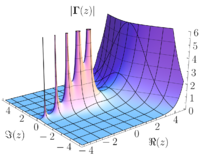Rouché's theorem

Rouché's theorem is like a game that helps us figure out how many solutions a math problem has. Imagine we have two teams of people, the blue team and the pink team. Each team has a bunch of dots on a number line.
First, we look at a section of the number line where the dots from both teams are close together. Then we ask, "Which team has more dots in that section?"
If the blue team has more dots, they win that section. If the pink team has more dots, they win that section.
Next, we add up how many sections the blue team won and how many sections the pink team won. If the blue team won more sections, then our math problem has the same number of solutions as the number of sections the blue team won. If the pink team won more sections, the math problem has the same number of solutions as the number of sections the pink team won.
So Rouché's theorem helps us count how many solutions a math problem has by comparing the dots of two teams and seeing who wins more sections.
First, we look at a section of the number line where the dots from both teams are close together. Then we ask, "Which team has more dots in that section?"
If the blue team has more dots, they win that section. If the pink team has more dots, they win that section.
Next, we add up how many sections the blue team won and how many sections the pink team won. If the blue team won more sections, then our math problem has the same number of solutions as the number of sections the blue team won. If the pink team won more sections, the math problem has the same number of solutions as the number of sections the pink team won.
So Rouché's theorem helps us count how many solutions a math problem has by comparing the dots of two teams and seeing who wins more sections.
Related topics others have asked about:
